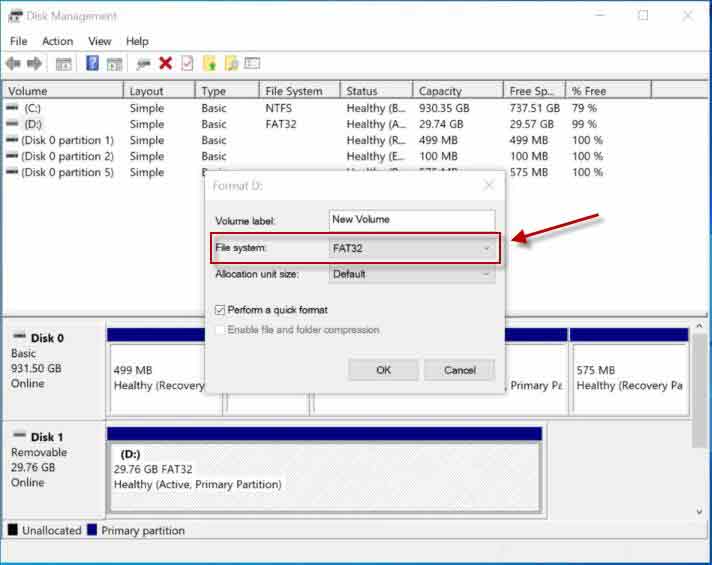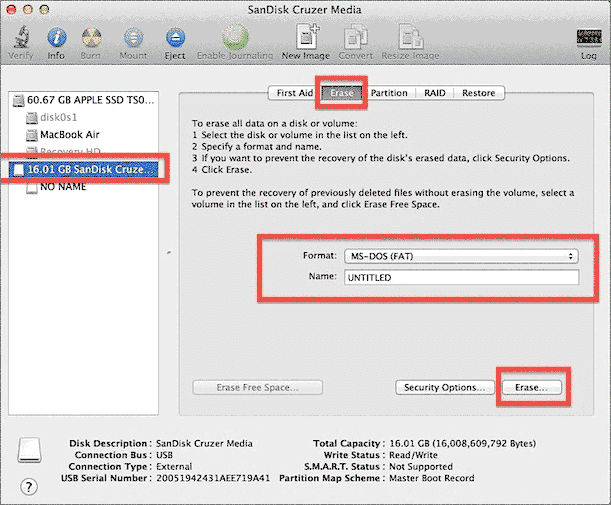

- #Format usb stick on mac for retropie how to#
- #Format usb stick on mac for retropie update#
- #Format usb stick on mac for retropie software#
However, it doesn't hurt to check this by running the update script. If you've just downloaded RetroPie from the website, your system is most likely already the most recent version. Note: While not always necessary (as in this case), it is generally recommended that you reboot your system after making changes within settings as not all changes will go into affect until the next boot sequence. You should now be connected to your WiFi network. From here you will select “Connect to Wifi Network”, choose your network, and enter the password. WiFi is located at the bottom of this list.Īfter selecting WiFi there will be another, not so pretty, option menu. Once you have selected RetroPie, you'll see a new screen with more advanced setup options. To connect to wifi, start by navigating to the RetroPie configuration from the emulation-station screen (at this point without any games loaded this should be the only option available). This is where all the game consoles that you load onto the system will appear, but before playing games there are still a few steps in setup that you may want to do. Once this is done, you'll be shown a screen for configuring a controller, for the rest of the setup you're going to want a keyboard to navigate and type in credentials.Īfter you've setup the keyboard (see later section if unsure how) and pass this screen you'll be dropped into emulationstation. The first time you boot up the system it will take some time to setup, after this initial time subsequent boots will be much quicker. With the RPi plugged into a monitor you'll see the boot sequence beginning with lines of text showing the system working. Etcher helps easy format and write the.img file onto the drive (this is not exclusive to RetroPie, any OS that you want to run on the RPi must be written this way).

Most games from older consoles take up virtually no space (in the kB range), but some of others like the PS1 and N64 systems that you can emulate take up as much as 250 MB per game.
#Format usb stick on mac for retropie how to#
This first section will be a walk through of how to get RetroPie running on your device and how to properly configure essential settings.Ĭhoose a micro SD card that is 8GB or higher to accommodate both the RetroPie OS and the games that will be loaded on it.
#Format usb stick on mac for retropie software#
To get the most out of the software and have your system performing well, it's recommended to use the newest Raspberry Pi Model 3 B+ (referenced as "RPi" in this guide). It comes packed with a large number of console emulators for classic systems and is highly customizable, making it the go to choice for DIYers and retro-gamers. RetroPie is amongst the most popular emulation software around and is specifically built to run on the Raspberry Pi. And if you're already familiar with RetroPie than you can skip down to the Additional Components to spice up your system If you are only interested in getting up and running playing your favorite games, you only need to worry about the first section. Note: This is a relatively long guide but you do not need to complete all the sections.

This is NOT a guide for every advanced setting for RetroPie, but a guide that covers all the essentials for setup. This guide goes over setting up the RetroPie emulator on a Raspberry Pi, creating a functional power button and cooling fan based on CPU temperature using background scripts, and a number of other helpful tips I learned during the build. Designed to cover the basics and then some to help you get going fast on your own console. This is an attempt to bring much of what you need to know about the process together in one place. While there are lots of great resources available online to help setup and create your own retro-gaming console, much of this information is scattered across a bunch of forums and websites.


 0 kommentar(er)
0 kommentar(er)
